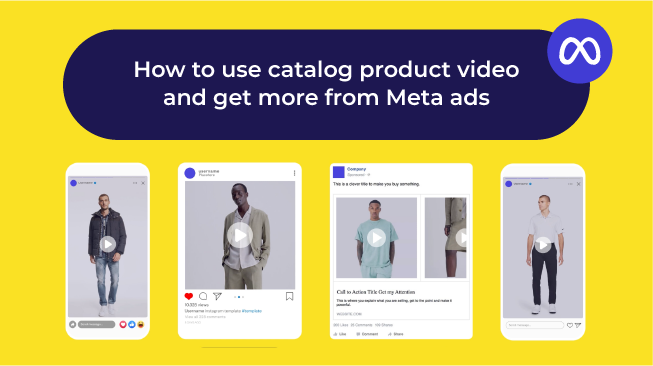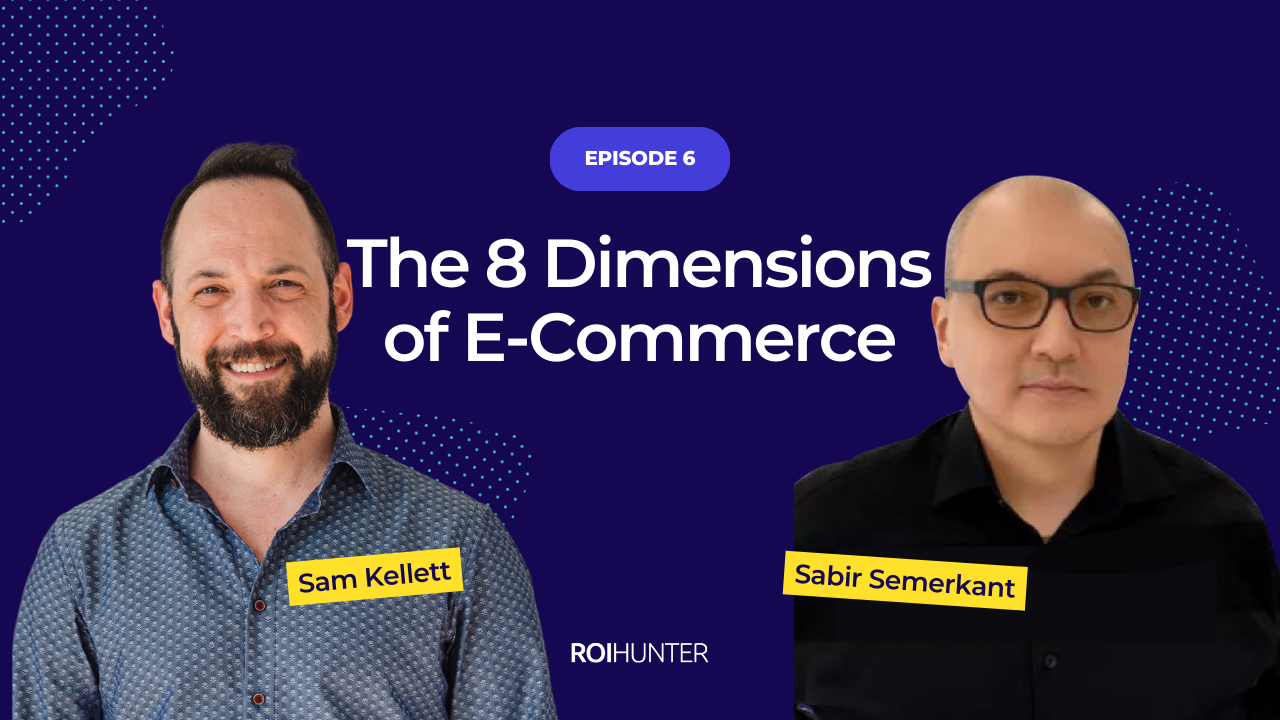Black Friday has long been a cornerstone of the retail industry, offering consumers the chance to snap up discounts and deals in the lead-up to the holiday season. However, in recent years, the event has come under scrutiny, with some retailers questioning whether the costs of participating outweigh the benefits.
While 2022’s Black Friday online sales did jump by 2.3%, sales fell short of the 8.6% increase in 2021 and 32% increase in 2020. So, as we look towards Black Friday 2023, it's worth asking: is Black Friday still profitable for retailers?
In this article, we’ll take a look at both sides of the argument, delving into reasons why Black Friday can create challenges for some retailers and why it remains profitable for others.
Why Black Friday can stunt profitability for retailers
While most retailers continue to participate in Black Friday, it does come with its challenges.
Below are a list of challenges that can offset profitability on Black Friday and leave some retailers wondering if participating is really worth it.
Steep discounts
Black Friday may lead to increased sales volume, but it can also result in margin erosion.
The competitiveness involved in Black Friday can lead to a race to the bottom in terms of pricing, resulting in a decrease in profitability for all retailers involved. This can be especially true for smaller retailers who can’t afford to offer the dramatic discounts that their larger counterparts can.
And things are shifting. In 2021, retailers were able to keep their discounts lower (averaging 24%) due to the plethora of products held up by the supply chain problem. But in 2022, the average discount rate increased to 30%. The hike in Black Friday discount rate is likely a result of retailers trying to get rid of the excess inventory that accumulated over last year.
Another downside to high discounts on Black Friday is that retailers may be training their customers to wait for sales before making purchases, which can make it difficult for retailers to sell full-priced items throughout the year.
Luckily, large discounts aren’t always bad. The trick to doing them right lies in retailers knowing the right products to discount. To achieve this, retailers need visibility into their product-level performance. If retailers know their PPC or social ad spend for each product and can compare it with that product’s margin, they’ll know which items can be profitably discounted, and to what degree.
Increased marketing costs
Because Black Friday is such a highly competitive day for retailers, they often need to spend a significant amount on marketing to get their message across.
In 2022, Black Friday retail media ad spending increased by 188% over the daily average in November, paid search rose by 160%, cost-per-clicks (CPCs) shot up by 43%, and paid social went up 76%.
The cost alone of running ads on Black Friday can leave a deep cut in margins and make it difficult for retailers, especially smaller ones, to compete and turn a profit.
Once again, this problem can be alleviated by ensuring the right products are being promoted. However, 80% of a retailer’s social ad budget is going toward promoting just 5% of their catalogue. Moreover, retailers don’t have control over which 5% of their catalogue gets promoted.
To gain more control over what social ad platforms promote for Black Friday, retailers can use product performance data to create separate product groups/sets with their own bids and budgets, based around their specific goals. The advertising algorithms will pick from the selected groups rather than from the entire catalogue, ensuring that all of the products they want promoted get promoted.
Inventory management
Black Friday can also present significant challenges in terms of inventory management.
Retailers have to balance the need to clear out old inventory with the need to maintain adequate stock levels after the holiday. If retailers are unable to accurately predict demand and stock levels for Black Friday, they’ll end up with excess inventory that they may be unable to sell.
Now that the supply chain catastrophe has abated, there’s an increase in supply for goods. However, consumer demand hasn’t increased, ultimately resulting in more deadstock and driving prices down for consumers. This, combined with the inability to accurately forecast demand, has burned unforeseen holes in retailers’ pockets, leaving them scrambling with what to do with all their leftover inventory.
According to Karel Schindler, CEO of ROI Hunter, “In 2022, retailers overestimated what their holiday sales would be. Due to the economy, the purchasing power of consumers ended up being lower than they expected. There was an expectation that online sales would continue to be as strong as the year before, but 2022 was very different from 2021, when many consumers were still avoiding physical retail due to COVID fears.”
Moreover, over half (56%) of retailers lack insight into which of their products are likely to become deadstock. This is especially danger ous, because 48% of retailers cut their deadstock’s original prices to keep inventory moving.
The ideal solution is to avoid stocking excess inventory in the first place through better demand forecasting. To do that, a consistent way to track deadstock and potential deadstock is crucial to allow marketing teams to decide the best strategies for dealing with the inventory they have, and for purchasing departments to make data-informed buying decisions about the stock they need.
However, a big part of the problem is that the marketing team doesn't know the purchase price of every product, and the purchasing team doesn’t know the ad spend behind each sale.
By connecting purchasing with product-level performance data, the purchasing department can gauge the actual performance of each item. They can understand, in real time, how difficult it is to sell each product based on marketing metrics like profit on ad spend (POAS), return on ad spend (ROAS), conversion rate, click-through rate, etc., and make their buying choices based around these.
Increased returns
With the increase in sales on Black Friday comes an increase in returns. In recent years, 143% more items were returned on December 3rd than on any other day of the year, suggesting that a lot of shoppers second guess their impulse buys from Black Friday.
Not to mention about a third of shoppers send back what they bought on Black Friday, equalling about 30 million products.
And return rates are rising. In 2022, Black Friday weekend returns increased by 60% globally.
The most common reason to return items is due to wrong sizes, which also suggests that at least some returns could be avoided by simply representing product sizes correctly. Some brands, such as Adidas, are combatting this via a sizing chart, helping alleviate consumer concerns over whether products are true to size.
However, that’s not a cure-all solution, because there’s a growing trend in shoppers purposely ordering multiple sizes and then sending back the sizes that don't fit.
Once returned, retailers need to process these items, restock the inventory, and swallow any other associated costs, proving extremely expensive for retailers.
Although returns can’t always be predicted, retailers can offset some disappointment by factoring in the multiple sizes per order trend into their Black Friday planning.
Additionally, with the help of product performance data, retailers can find products with a high chance of return. They can then create a rule to automatically exclude highly returned products from promotions, set them up with a special Black Friday promo campaign, or however else the brand would like to handle them.
Also, once retailers know which items are more likely to get returned, they can improve their demand forecasting strategy by not restocking these products.
Why Black Friday can be profitable for retailers
With all of these challenges, it might seem like Black Friday’s backlashes outweigh its benefits. However, there are still a lot of plus sides to participating in Black Friday.
Below is a list of reasons why the shopping holiday remains profitable.
Increased sales
An obvious reason why Black Friday remains profitable for retailers is that it leads to a significant increase in sales.
Black Friday’s renown discounts and remarkable deals lure shoppers with the promise of substantial savings. The perception of exceptional value during Black Friday serves as a strong incentive for consumers to engage in purchasing decisions they may have otherwise deferred.
And despite concerns of inflation and the cost-of-living crisis, Black Friday broke $9 billion in sales in 2022, with online sales reaching $9.12 billion, up 2.3% year over year.
In the UK, Barclaycard Payments reported a 3.2% increase in transactions compared to 2021.
There was also a global increase in shoppers on Black Friday, with Shopify reporting that 52 million people across the world made purchases from the brands they work with, a 12% hike from 2021.
This could suggest that with the economic turmoil at hand, Black Friday serves as a “‘save’ haven” for financially conscious consumers, as it defied predictions for a year of economy-driven stunted sales growth.
Impulse buying and cross-selling
Black Friday often triggers impulse buying behaviours among customers. The limited-time nature of the deals and the fear of missing out (FOMO) encourage consumers to make spontaneous purchases that increase sales.
Additionally, retailers strategically cross-sell and upsell products to maximise their Black Friday sales. By bundling related items or offering special promotions on complementary products, retailers can increase average order value (AOV) to boost overall sales.
Last year, Black Friday had a global increase in AOV of 4.9%, with AOVs equaling an average of $105 globally. Higher AOVs can help to offset some of the higher holiday expenses, such as increased ad expenses and return rates.
Increased traffic, brand awareness, and brand loyalty
Black Friday is also a significant driver of increased traffic for retailers, both off and online. The hype and excitement surrounding the event draws in consumers who may not have visited a store or store’s website otherwise. This increased traffic can lead to sales of products that are not on sale.
The additional traffic during Black Friday is also an excellent opportunity for retailers to build brand awareness. By offering attractive deals and promotions, retailers can generate buzz and increase exposure for their brand. If all goes well, this exposure can translate into long-term benefits such as increased customer retention and higher customer lifetime value (CLV).
Moreover, the event serves as a catalyst for future sales. Retailers can leverage Black Friday by offering other perks such as free gift wrapping, free shipping, or loyalty rewards to improve retention.
Another way to encourage retention beyond Black Friday is to reach out to buyers afterward, expressing appreciation for their business. Brands can send personalised thank-you emails, ask for feedback, and provide information on new products and upcoming sales. This engagement helps maintain a connection with consumers and keeps that brand at the forefront of their mind.
Retailers can also offer exclusive deals or promos specifically for customers who made purchases during Black Friday. This could include additional discounts, freebies, or loyalty points that can be redeemed on future purchases, persuading customers to return for more.
Conclusion
Despite its drawbacks, retailers can be profitable on Black Friday, if they go about it the right way. Being able to spot what products are earning money and which aren’t, and then making business decisions based off of that, such as which items to promote, which to purchase and how much, are crucial steps to a profitable holiday.
To achieve this, it’s critical for retailers to gain access to their product performance data and put it into action. The way to collect and manage this data is with a product performance management (PPM) platform.
Learn more about how to use a PPM platform for product segmentation here.


.png)
